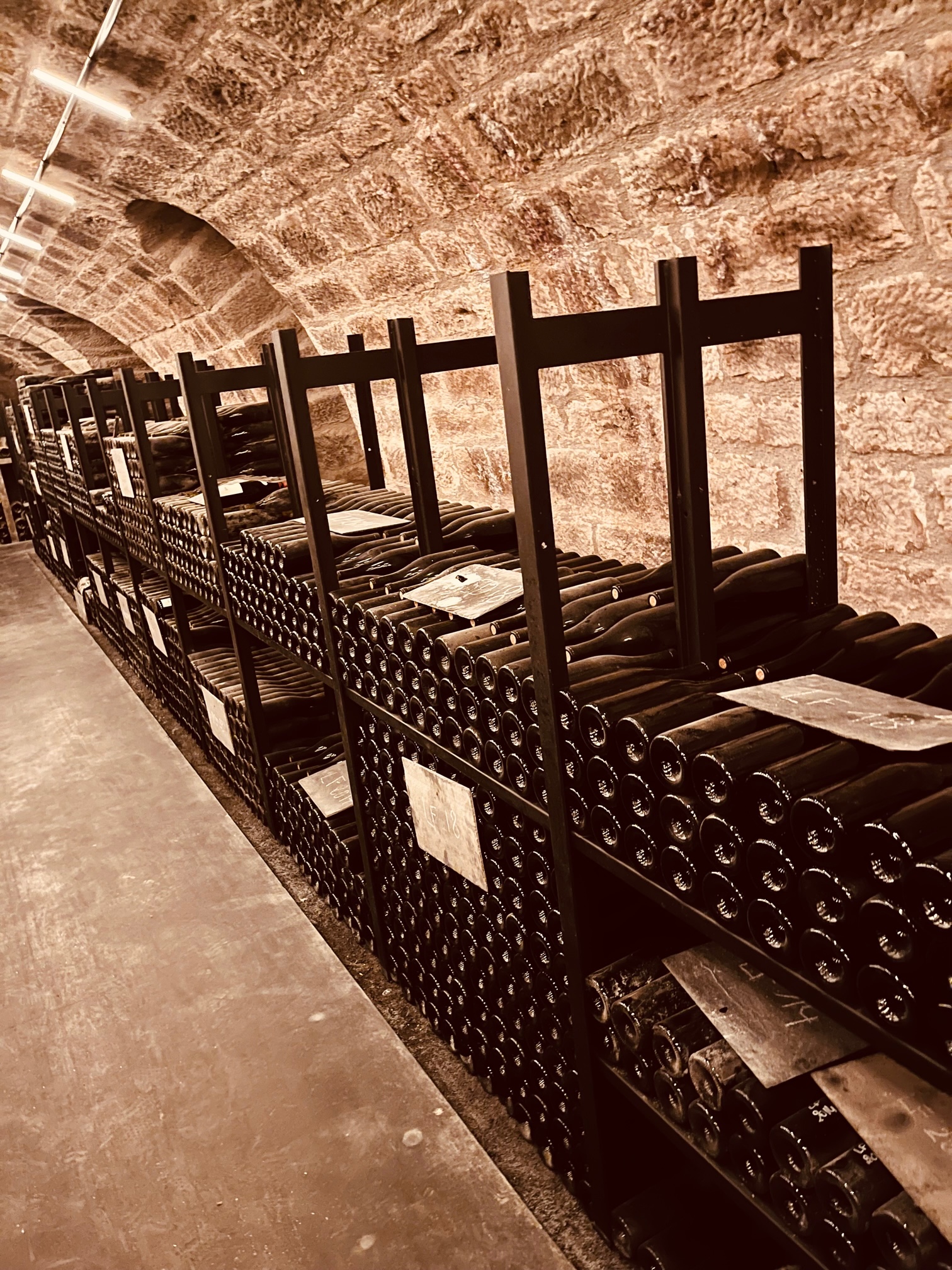
As followers of this Blog know your scribe is an enthusiastic follower of Burgundy including the iconic Clos de Tart. Founded back in 1141 this respected domaine has had nearly 900 years of history to get things right. More recently the family Marey-Monge 1791-1932 followed by family Mommessin 1932-2018 made some glorious vintages but lacked consistency. In April 2018 the Pinault family under Artemis Domaines acquired this large distinct Grand Cru terroir monopole site in Morey-Saint-Denis of 7.53 hectares. Several previous references by me including an extensive vertical posted here on December 12, 2016. Still a big fan of the lighter mature delicate 1985, outstanding complex brilliant 1990 and patience for excellence balanced 2005 (tasted again last week and still needs more cellaring to reach ultimate heights).
Pleased to report on an extended update visit there last week with Director Alessandro Noli to check out the major renovations to the tasting room, vat room, and vineyards with already these innovative quality improvements showing in the wines. Too many to list all of them here but some 7 major changes include these:
1. Vat room now has a variety of sizes from largest 40 HL down to 20 first used in 2019 to accommodate precisely all the different distinct plots in the vineyard.
2. Change the philosophy of the wine making using less extraction that had produced sometimes a more rustic too much tannin with a shorter dry finish style. New vertical press. The “DNA of the Clos de Tart vineyard has a powerful terroir so doesn’t need a lot of extraction.” Alessandro only keeping the cap wet and humid and not over extracting while key focus is on bringing out elegance and finesse as key elements in the finished wines.
3. Less new oak from the 100% used previously. Started to lower in 2015 at 80% but now down to about 60% in the Grand Vin & 45% in the second La Forge again for their elegance goal. May eventually go to 40/20. Using three main coopers of Taransaud, Francois Freres, and Saint Martin but prefers and is expanding the latter one.
4. Experimenting with the help of the University of Bordeaux in determining the right amount of whole clusters to use. Many samples sent at different times both before and after malolactic fermentation over the last four years to find the ideal impact. Impressive research ongoing over the varying climatic conditions each year. “Too much stems inclusion can mask the wonderful distinctive terroir of Clos de Tart”. Decision made to include about 52% for 2022 (and 20-25% for La Forge)
5. Excellent key grape selection for very best Grand Vin as they now are producing a Village AC third wine from very young vines (3-6 years) from all the plots as well as second wine La Forge.
6. Late blending of plots for Grand Vin then allowing the the blend some time to cohese together in barrel before bottling. Less new oak therefore want patience with longer vat time.
7. Yields are lower with 2023 at 35 hl/ha & 2022 at 28 hl/ha.
The proof was in the tasting of 2022 Village, La Forge, and Clos de Tart.
VILLAGE AC 2022 early harvest start August 26 using 2018 replanting and zero new oak bottled a month ago shows fresh red fruit aromatics.
LA FORGE 2022 has 23 year old vines (1984 planting) with better clonal selection with 20-25% whole clusters shows fresh elegance.
CLOS DE TART 2022 deep dark but bright clean aromas. Impressive smooth refined tannins with superb balance so elegant. “Ready to bottle”. Sure shows how less can result in more for the wine! Congrats.






















You might also like:
 |  |  |